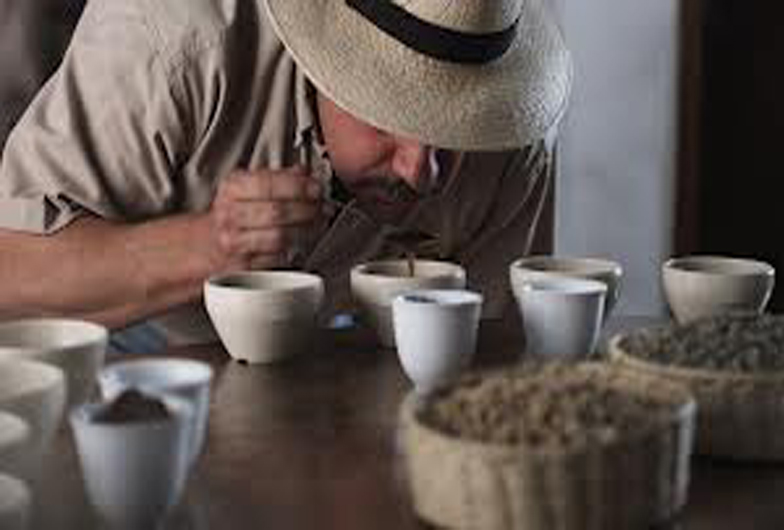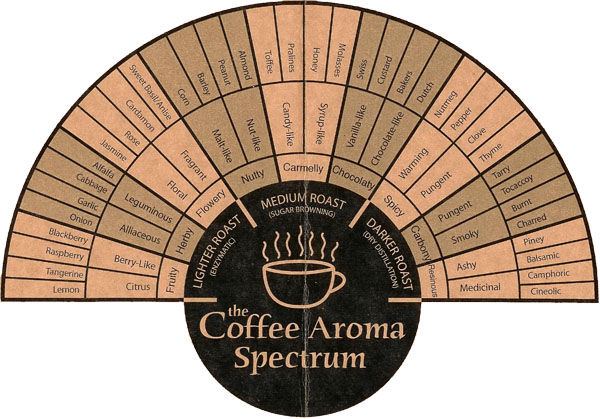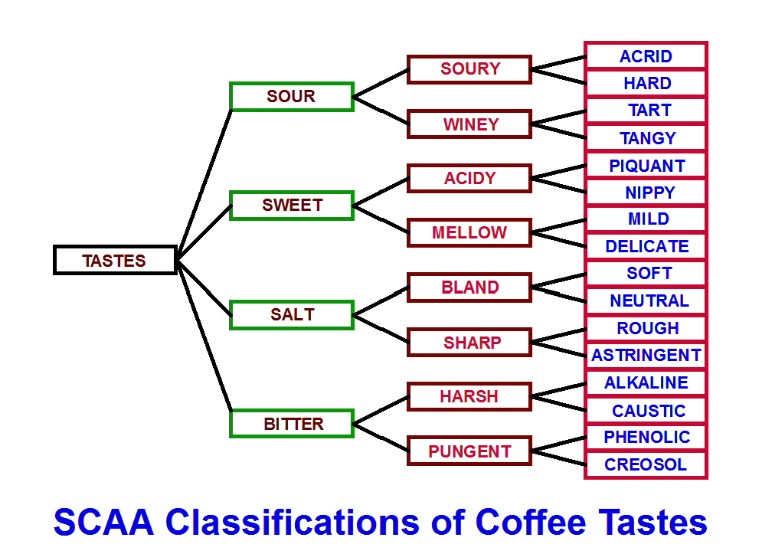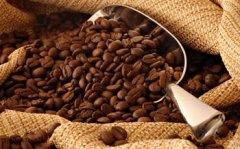SCAA Coffee Cup testing process introduction to Fine Coffee

1. Fragrance: the first step in cup evaluation is to evaluate the aroma of coffee beans. Grind 10 grams of coffee, put it in 3-5 sample cups, and then breathe hard at the gas released by the freshly crushed coffee cells. The characteristics of the aroma indicate the essence of the taste of coffee beans: the sweet smell indicates that its taste is sour; the pungent smell indicates that its taste is irritating. The strength of the aroma indicates the freshness of the coffee, that is, the time it takes from roasting to grinding into powder. The aroma consists of the most volatile aromatic compounds, especially those containing sulfur, such as methyl mercaptan. At present, there is little people can do about how to keep these substances in coffee beans.
two。 Aroma: the second step in cup review is to check the aroma of coffee water. First, pour 150ml of boiled fresh (oxidized) water into the freshly ground coffee powder and let the coffee powder soak in water for 3-5 minutes. Coffee powder forms a cap-shaped shell on top of the water. Stir the coffee with a coffee spoon and break the cap shell. At this time, the caffeine hot water will release the gas into the nasal cavity, so that the nasal diaphragm feel a comprehensive flavor: from fruit, grass, to nutty. The experience of cup review will cause cup reviewers to classify coffee according to the memory of various coffee smells. In the future, different kinds of coffee can be distinguished according to different odors. Generally speaking, the aroma characteristics of coffee are related to the origin of coffee. Correspondingly, the strength of the aroma is related to the freshness of coffee. Freshness is measured by the length of time from baking to cooking. Freshness is also affected by the type of packaging that protects coffee from dampness and non-oxidation.

3. Taste (Taste): carefully savoring the taste of freshly brewed coffee is the third step in cup review coffee. Use a special coffee spoon, usually a round spoon with a capacity of 8 ~ 10cc. Preferably silver-plated, which can dissipate heat quickly. Take out 6 ~ 8cc of coffee water and put it in front of your mouth and sip it hard. Quickly inhale coffee and distribute it evenly on the surface of the tongue. All sensory nerve terminals respond to sweet, salty, sour and bitter tastes at the same time. Because temperature affects the degree of stimulation, paying attention to responses in different sensitive areas of the tongue can help capture different characteristics. For example, because temperature reduces sensitivity to the sweetness of sugar, acidic coffee initially produces a tingling on the tip of the tongue rather than sweetness. Hold the coffee in your mouth for 3-5 seconds and focus on the type and intensity of the taste. In this way, primary and secondary flavor characteristics can be evaluated.
4. Nose: the fourth step is the same as the third step. Inhale coffee through the surface of the tongue. Due to the change of water vapor pressure, part of the organic matter in the water changes from liquid to gaseous state. The act of sucking coffee hard causes the gas to enter the nasal cavity, allowing cup reviewers to analyze the smell of coffee. At the same time, evaluate the taste and smell of coffee, so that cup reviewers feel the unique flavor characteristics of coffee. Standard roasted coffee usually has the taste of caramelized products, while deep-roasted coffee usually has the taste of dry distillation products.
5. Aftertaste (Aftertaste): the fifth step is to put coffee water in your mouth for a few seconds, then swallow a small part. Quickly suck the throat to send the water vapor left in the back palate into the nasal cavity, you can find the smell of the heavier molecules left in the back palate. The aromas of various compounds felt in the aftertaste are sweet, similar to chocolate; or bonfire smoke, or cigar smoke; sometimes, there are similar irritating spices, such as cloves; sometimes, like resin, similar to turpentine; sometimes, there are all these smells. 6. Body: the final stage of cup review is to evaluate the taste of coffee water. The tongue slips gently across the palate of the mouth to feel the texture of the coffee. The feeling of oily quality and smoothness can measure the fat content of coffee water, while the feeling of "weight", thickness and stickiness of coffee can measure the fiber and protein content of coffee. The two make up the mellowness of coffee.

Important Notice :
前街咖啡 FrontStreet Coffee has moved to new addredd:
FrontStreet Coffee Address: 315,Donghua East Road,GuangZhou
Tel:020 38364473
- Prev

Introduction to the Old Coffee varieties of SCAA there are more than a hundred coffee varieties in coffee
Coffee has more than a hundred varieties of coffee, the more common coffee are: Arabica, outstanding personality, unique flavor, is the main force of boutique coffee, mainly used for coffee shop management and high-end coffee market supply; Robusta, rough flavor, high caffeine content, not boutique coffee, often used for instant coffee processing and Italian coffee mixed beans. Ethiopia Typica and Yemen Bourbon are
- Next

Boutique Harald washed coffee beans Ethiopian water washed mocha
Rarely seen in Ethiopia in a hundred years is a combination of delicious coffee washed with mocahara, orange peel and high-grade black tea. Harald is an important boutique coffee production area in the eastern plateau of Ethiopia. According to the administrative location of Ethiopia, Harald belongs to an autonomous prefecture, which has been a famous coffee trading city since ancient times. the pass of eastern Ethiopia. It is the most
Related
- Detailed explanation of Jadeite planting Land in Panamanian Jadeite Manor introduction to the grading system of Jadeite competitive bidding, Red bid, Green bid and Rose Summer
- Story of Coffee planting in Brenka region of Costa Rica Stonehenge Manor anaerobic heavy honey treatment of flavor mouth
- What's on the barrel of Blue Mountain Coffee beans?
- Can American coffee also pull flowers? How to use hot American style to pull out a good-looking pattern?
- Can you make a cold extract with coffee beans? What is the right proportion for cold-extracted coffee formula?
- Indonesian PWN Gold Mandrine Coffee Origin Features Flavor How to Chong? Mandolin coffee is American.
- A brief introduction to the flavor characteristics of Brazilian yellow bourbon coffee beans
- What is the effect of different water quality on the flavor of cold-extracted coffee? What kind of water is best for brewing coffee?
- Why do you think of Rose Summer whenever you mention Panamanian coffee?
- Introduction to the characteristics of authentic blue mountain coffee bean producing areas? What is the CIB Coffee Authority in Jamaica?

